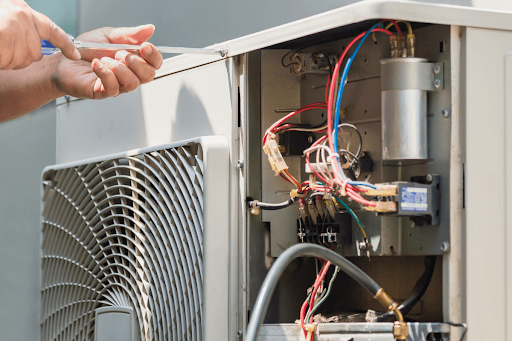3 Reasons Why Convertible desks are the best

A few years ago, medical researchers started warning about the health risks of sitting for a long period. Ergonomics specialists nowadays believe that moving between tasks frequently every day is the most beneficial to your health. Many organisations’ in-house ergonomics experts think standing all day isn’t better than sitting. With standing desks, the biggest benefit is being able to move around.
These desks are available in various forms that allow you to convert between seated and standing modes quickly. With a swing of your arm, you can lift your monitor or laptop to eye level for virtual meetings, making the webcam more comfortable for you and your coworkers. When not in use, they may be pulled out of the way with screws or clamps.
It is possible to get power-assisted types, but manual spring-assisted models are more common. Conversion tables sit on top of the existing desk and lift the keyboard and monitor or laptop to standing. Ergonomics is the first thing to consider when looking for the ideal workstation for your needs.
Ergonomics: The Basics
- The first step in choosing a desk is to ensure it’s the proper height. When typing, keep your forearms parallel to the floor, the elbows at 90 degrees, and your feet level on the floor, whether seated or standing. Your knees and hips should be at a 90-degree angle when you’re placed.
- You shouldn’t presume that all standing workstations will work for you if you’re even an inch or two over or under the average height requirements. So, whether standing or sitting, get a tape measure or a friend to get an accurate reading from the ground to the bottom of the bent elbow. In both its high and short settings, the keyboard is at this height above the ground.
- The devices are more stable when not set to their maximum height. Therefore a more excellent range of adjustability is nearly always preferable.
- An ironing board is an excellent substitute for a standing desk if you aren’t ready to commit or the one you want is currently out of stock.
- If you’re standing on a hard surface, such as concrete or tile, make sure you wear supportive shoes and a mat. Finally, if you’re using a lot of wired equipment, keep in mind how you’ll connect the power cords, Ethernet connections, and other wires. You may do several things, such as purchasing longer wires or switching to a wireless keyboard.
You may use this information to help you find the best standing desks for your needs.
Adaptors for Swing Arms
It can be located on the back of a table or desk with either a laptop shelf or a monitor mount, depending on the user’s needs. If you wish to use your computer on your table or spread out your files, you can adjust the shelf or lower the swing arm (whether you’re using a monitor).
A laptop user who conducts a lot of teleconferencing would want to maximise every inch of available space.
Workstations for Conversion
No permanent mounting is necessary because a conversion desk stands on top of the existing desk or table. One shelf holds the monitor or displays, and another has the keyboard; both move up or down in tandem, boosted by the pneumatic actuator or another device in the majority of the types. Laptops can be stored on a single shelf, but a swing arm variant may be preferable.
In-Depth Workstations
An electric motor often drives the surface layer of a sit-stand desk, allowing it to rise and fall vertically. An expert’s advice: Don’t buy less-priced ones that use hand-crank mechanisms. That implies you’re less inclined to switch positions frequently.






